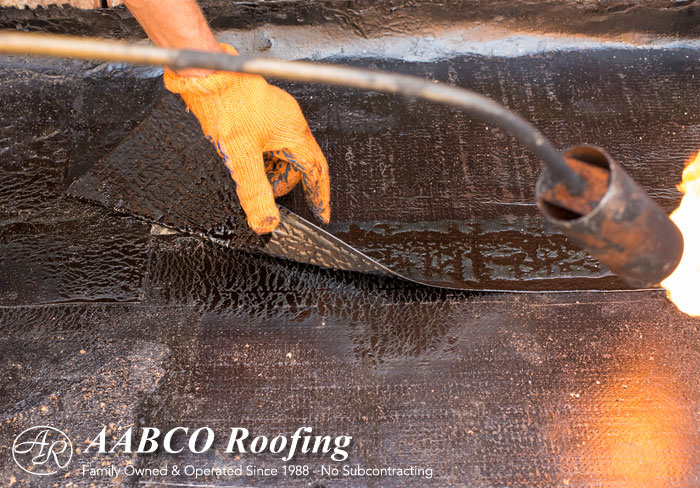
Regular maintenance on your flat roof is essential to ensure that your building, your contents, and your family are safe. It’s a worthwhile investment and will definitely pay off in the long run. Different types of roofs require different types of upkeep – flat roofs are treated differently to non-flat or pitched roofs. We recommend that you know the difference between these two types of roofs when it comes to maintaining them.
All roofs require maintenance as the years go by. Flat roofs can have a very long lifespan if they are made with top quality materials and properly maintained. EPDM (ethylene propylene diene terpolymer) is your best options for quality and durability. In terms of maintenance, we suggest carrying out flat roof maintenance during spring and fall. Maintenance after severe weather conditions is also advised. Debris tends to collect on flat roofs and can affect the drainage.
Pitched vs Flat Roof Maintenance
Pitched roofs also require regular maintenance – they are more challenging to inspect because of their slopped designs. Your flat roof will be easier to keep an eye out for any debris or drainage issues. Also, the Initial expenses and installation of a flat roof will be kinder on your wallet than a pitched roof. This is because they have a smaller surface area and generally use less costly materials. Either way, preventative maintenance on your roof with the help of an experienced and licensed company will save you time, money and stress by keeping major problems at bay.
Preventative Flat Roof Maintenance
There are some common problems you could run into with a flat roof. Debris, leaves and branches collect on this type of roof and can be easily cleaned away during a roof maintenance call. Moss and other types of growth on the roof need to be removed. If this occurs on your flat roof, it can mean that water is being held in the roof in which case it is best to call in a professional before further damage occurs. Some other areas of your roof that can be identified and fixed with regular roof maintenance are:
-
Ponding
Because they don’t have any significant sloping, flat roofs are prone to having water collect and pool on them. Pumps could be installed for areas of your roof that are susceptible to ponding. Or perhaps a draining system can be fitted. As always, it is best to have regular maintenance and inspections, and to discuss all your options with a professional.
-
Blistering
Blisters are caused by trapped air or moisture between the layers of a roof. They grow larger in the heat and sun. Small blisters are not major problems but bigger ones need to be repaired. Generally, blisters are cut out and then patched up.
-
Movement
Flat roof materials can expand and contract with changing temperatures. This won’t be a problem if the materials are flexible and can cope with some movement. If not, there is a risk of splitting. Felt layers are particularly prone to movement in the hotter months.
-
Splitting
Long cracks can occur in the roofing material. If not properly dealt with, they can get bigger and cause major leaking. Splitting is generally caused by movement or ponding of water.
We find that most costly repairs and issues with flat roofs could have been prevented with regular maintenance. Get a professional to inspect your flat roof twice a year but as a homeowner or business owner, we advise you to keep an eye on things up there throughout the year!
